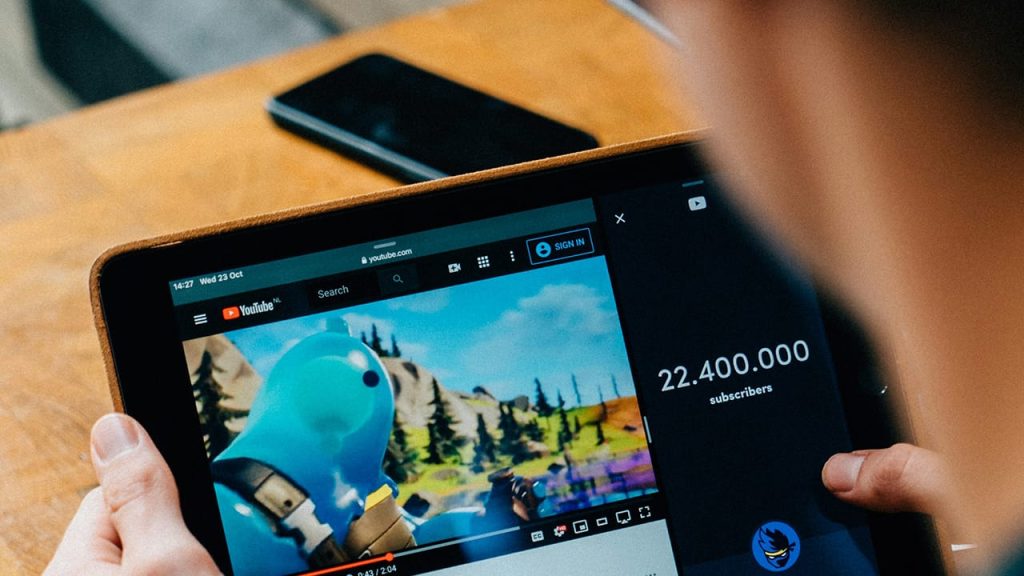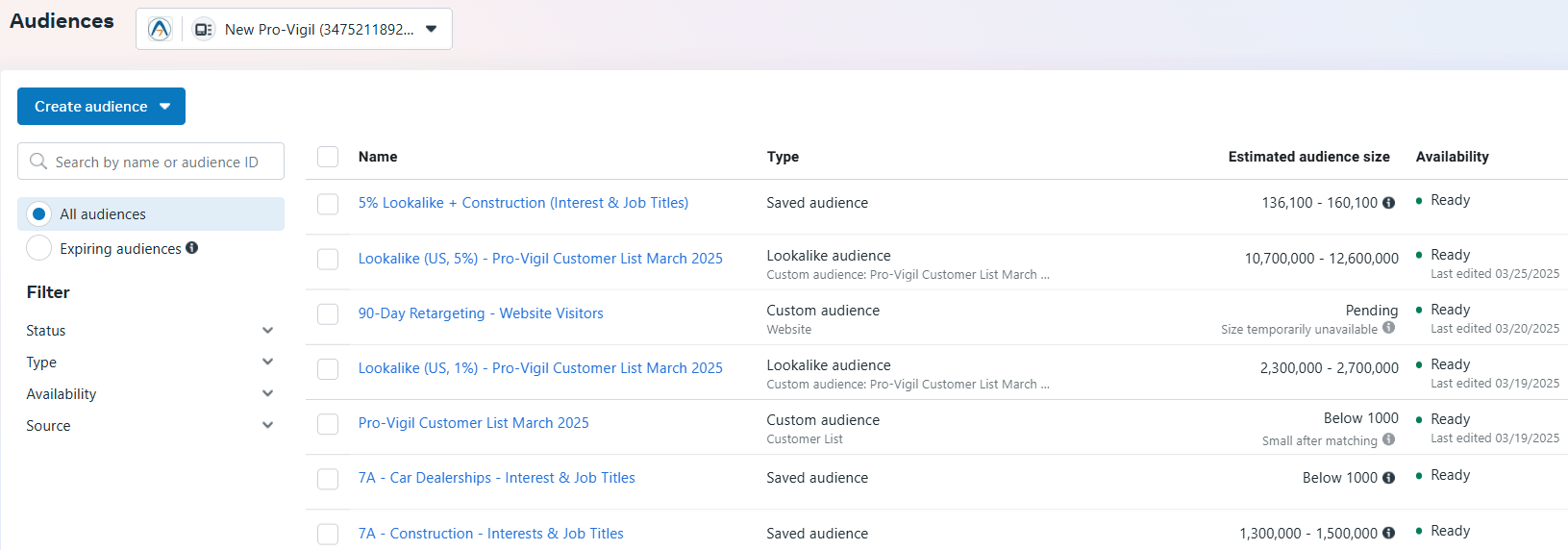
Ever wonder why that pair of shoes you looked at online keeps following you around the internet? This is a prime example of how strategic follow-ups can re-engage potential customers, making retargeting one of digital marketing’s most impactful tactics.
When done right, retargeting can turn window shoppers into paying customers and turn one-time buyers into loyal fans.
It’s common for shoppers to hold off on buying after their first encounter with a product, as people naturally take time to weigh their options before making a purchase. Retargeting allows brands to stay top-of-mind, offering multiple touchpoints to re-engage those who’ve already expressed interest.
What makes it even better is how social media platforms have streamlined and enhanced the way businesses reconnect with their audience. With the right approach, businesses can create ads that feel helpful rather than pushy, turning potential customers into actual buyers.
Understanding Retargeting and Its Impact
At its core, retargeting is about reconnecting with individuals who’ve already engaged with your brand, whether they’ve browsed your website, interacted on social media, or viewed a video. Rather than reaching out to a cold audience, it focuses on individuals who’ve already shown interest and are more likely to take the next step.
You might not expect this — shoppers who’ve already engaged with your brand are 3x more inclined to click your ads compared to those encountering it for the first time. That kind of impact highlights why savvy marketers invest heavily in well-crafted retargeting strategies.
The psychology behind this makes sense. If a person comes across an ad from an unfamiliar brand, there’s no existing trust to build on — it’s a cold introduction. But when they see an ad for a website they visited last week, there’s already some familiarity there. The brand isn’t a complete stranger anymore.
Social media platforms have amplified the power of retargeting by leveraging their deep understanding of user behavior. Armed with the precision targeting power of platforms like Facebook, Instagram, and LinkedIn, brands can now drop the right message into the right hands, just when potential customers are most likely to act.
What truly matters is recognizing that retargeting strategies can vary greatly in effectiveness. Someone who spent ten minutes browsing a website is different from someone who added items to their cart but didn’t buy. Different behaviors require different approaches.
Setting Up Your Retargeting Foundation
Before jumping into fancy campaigns, there’s some groundwork to do. Consider it the groundwork of a successful strategy — it may not grab attention, but it’s what holds everything together.
Installing Tracking Pixels
Most social media platforms use something called a pixel, which is a tiny piece of code that goes on a website. This pixel tracks what visitors do and sends that information back to the platform. Without proper pixel installation, retargeting campaigns are basically shooting in the dark.
While Facebook’s pixel gets the most attention, platforms like LinkedIn, Twitter, and others have similar tracking tools. The great thing is, they’re generally straightforward to set up, especially on websites powered by platforms like Shopify or WordPress.
To track visitor activity accurately, the pixel must be embedded on every page of the site, and not limited to just the homepage. When someone visits a product page, that’s valuable information. When they reach the checkout page but don’t complete the purchase, that’s even more valuable.
Image source SealSkinCovers
Creating Custom Audiences
Once your tracking pixel is actively collecting data, the next step is to build custom audiences based on user behavior. This allows for more targeted and effective retargeting. Here’s how to approach it:
- Segment by Behavior: Create distinct groups such as “visitors from the last 30 days” or “users who added items to the cart but didn’t complete the purchase.”
- Be Specific with Audience Criteria: Instead of lumping all visitors into one group, break them down by actions, like those who viewed budget-friendly products versus those exploring premium offerings.
- Use Time-Based Segmentation: Take advantage of time-frame filters. Someone who visited your site yesterday is much more likely to convert than someone who stopped by three months ago. Recency matters.
Platform-Specific Retargeting Strategies
Each social media platform has its own personality, and retargeting strategies should match that vibe. What works on LinkedIn probably won’t work on TikTok, and vice versa.
Facebook and Instagram Retargeting
Facebook and Instagram are retargeting powerhouses because they’re part of the same ecosystem. The same pixel works for both platforms, and audiences can be shared between them.
These platforms are great for visual retargeting. If someone looked at a specific product, show them that exact product in the ad.
Facebook’s dynamic ads can automatically create personalized ads based on what people viewed, which saves a lot of time.
The key on these platforms is not being too aggressive. Users turn to Facebook and Instagram for social interaction and engaging content. Heavy-handed sales messages can feel intrusive. Instead, focus on being helpful or entertaining while gently reminding people about the brand.
Video content works particularly well for retargeting on these platforms. A short, engaging video can re-capture attention better than a static image, especially for people who might have forgotten about the initial interaction.
LinkedIn Retargeting for B2
LinkedIn is a professional network, which means the approach needs to be more business-focused.
People are there to advance their careers and solve work problems, not to buy shoes or gadgets.
LinkedIn’s retargeting works best when it focuses on business benefits rather than features. Instead of “Check out our new software,” try “See how Company X increased productivity by 40%.” Case studies and social proof work particularly well on this platform.
The audience sizes on LinkedIn are usually smaller than other platforms, but the quality can be higher for B2B businesses. A list of 500 marketing directors is probably more valuable than 5,000 random social media users.
Twitter and Other Platforms
Twitter’s retargeting is often overlooked, but it can be effective for certain types of businesses. The platform moves fast, so messages need to be concise and timely.
Twitter works well for retargeting people who engage with content but don’t visit the website. If someone likes or retweets a post, they can be added to a retargeting audience and shown ads later.
Other platforms like Pinterest, Snapchat, and TikTok are developing their retargeting capabilities too. The key is understanding where the target audience spends their time and meeting them there.
Creating Compelling Retargeting Ad Content
The content of retargeting ads needs to be different from regular ads. These people have already heard of the brand, so the messaging can skip the introduction and get to the good stuff.
Addressing Common Objections
Retargeting ads offer a valuable chance to overcome the doubts that prevented potential customers from converting the first time. To address these objections effectively, consider the following strategies:
- Identify Real Concerns: Don’t assume. Review customer service emails, chat logs, and sales interactions to uncover common hesitations or questions.
- Tackle Price Sensitivity: If cost is a frequent barrier, use retargeting ads to promote financing options, discounts, or comparisons that demonstrate value.
- Reinforce Trust and Quality: When quality is in question, highlight customer testimonials, ratings, or money-back guarantees to build confidence.
- Remind with Purpose: Use retargeting to reassure users that their concerns are understood and that you have a solution.
Using Social Proof and Urgency
Sometimes, hesitant buyers just need a small spark of motivation to take the next step. Social proof – showing that other people have bought and been happy – can provide that push.
Customer reviews, testimonials, and “others who bought this also bought” messages work well in retargeting ads. They show that the person wouldn’t be taking a big risk by making the purchase.
Urgency can work too, but it needs to be genuine. False scarcity (“only 3 left!”) can backfire if people realize it’s not true. Real urgency, like a legitimate sale ending or a limited-time offer, is more effective.
Advanced Retargeting Techniques
Once the basics are working, there are more sophisticated strategies that can squeeze even better results out of retargeting campaigns.
Sequential Retargeting
Instead of showing the same ad over and over, sequential retargeting tells a story. The first ad might introduce a problem, the second shows the solution, and the third includes customer testimonials.
This approach mimics how people naturally make decisions. They rarely go from “never heard of you” to “take my money” in one step. Sequential retargeting guides them through the process at a comfortable pace.
The timing between ads matters. Show the second ad too quickly, and people might not have had time to process the first one. Wait too long, and they might forget about the brand entirely.
Cross-Platform Retargeting
People don’t live on just one social media platform. They might see a Facebook ad during lunch, then encounter the same brand on LinkedIn that evening. Cross-platform retargeting coordinates messages across different platforms for a consistent experience.
This requires careful planning to avoid overwhelming people with ads. The frequency should be managed across all platforms combined, not just individual ones.
Lookalike Audiences from Retargeting Data

Image source Pro-Vigil
Now we’re entering the game-changing part. The people who respond well to retargeting ads – the ones who actually convert – can be used to find similar people who haven’t interacted with the brand yet.
Most platforms can create “lookalike audiences” based on high-value customers. This combines the targeting precision of retargeting with the reach of prospecting campaigns.
Measuring and Optimizing Performance
Retargeting campaigns need constant attention and optimization. What works today might not work next month, so regular monitoring is essential.
Key Metrics to Track
Click-through rates offer insight, but they don’t tell the whole story. For a more complete view of how your retargeting campaigns are performing, focus on these essential metrics:
- Conversion Rate: This indicates how many users who clicked on your ad actually took the desired action, whether it’s making a purchase, signing up for a newsletter, or downloading a resource.
- Cost per Acquisition (CPA): CPA offers a comprehensive view by combining ad spend and conversion performance to show how much it costs to acquire a new customer.
- Click-Through Rate (CTR): While often lower for retargeting ads compared to prospecting ads, CTR still matters. A lower CTR doesn’t necessarily mean poor performance, especially if those who do click are more likely to convert.
A/B Testing Strategies
Effective A/B testing is essential for optimizing retargeting ads and staying ahead in a constantly shifting digital landscape. Maximize the impact of your A/B testing by applying these proven tactics:
- Experiment with Key Elements: Test variations of images, headlines, calls-to-action, and ad formats to discover what connects most with your audience.
- Change One Variable at a Time: Isolate individual elements during tests, like using the same headline while changing only the image, so you can clearly identify what’s driving performance shifts.
- Make Testing a Continuous Process: Don’t stop after one round. Consumer behavior, competitor activity, and ad platform algorithms evolve over time — so should your ads.
Don’t Let These Mistakes Derail Your Strategy
Even experienced marketers make mistakes with retargeting campaigns. Let’s explore a few widespread errors and the best ways to sidestep them.
Over-Frequency Issues
Nobody likes being stalked by ads. Seeing the same ad over and over can cause viewers to become irritated, which may turn their perception of the brand unfavorably. This is called “ad fatigue,” and it can actually hurt the business.
Most platforms have frequency controls that limit how often individuals see the same ad. Use them. As a general guideline, aim to limit ad exposure to 3–4 times per week total across all platforms.
Vary the creative too. Even if the core message stays the same, different images or videos can make the ads feel fresh instead of repetitive.
Ignoring Mobile Optimization
Since the majority of social media browsing takes place on mobile devices, it’s crucial for retargeting ads to be optimized for smaller screens. Text that’s readable on a desktop computer might be too small on a phone.
Mobile users also behave differently. They’re often multitasking or have limited attention spans. Ads need to grab attention quickly and make the value proposition clear immediately.
Loading speed matters more on mobile too. If clicking an ad leads to a slow-loading website, people will bounce before the page even loads.
Future of Social Media Retargeting
Retargeting continues to shift and adapt, shaped by advancements in technology, evolving privacy laws, and changing consumer habits.
Privacy concerns are reshaping how retargeting works. Recent updates to Apple’s iOS have significantly reduced the ability to monitor user behavior across different apps and websites. Similar changes are coming to other platforms and devices.
Retargeting isn’t disappearing, but it’s shifting toward greater reliance on first-party data — information gathered directly from customers, rather than depending on third-party tracking tools.
Artificial intelligence is making retargeting more sophisticated too. Instead of simple rules like “show this ad to people who visited this page,” AI can predict which specific message will resonate best with each individual person.
Businesses that thrive will be those that embrace these shifts and continue prioritizing meaningful value for their audience. Retargeting should always feel helpful, not intrusive.
Retargeting continues to be a highly effective digital marketing strategy because it zeroes in on individuals who’ve already engaged with your brand. When done thoughtfully, it can turn missed opportunities into successful conversions while building stronger relationships with potential customers.
The key is remembering that behind every click and conversion is a real person making a decision. The best retargeting campaigns respect that humanity while gently guiding people toward solutions that genuinely help them.






